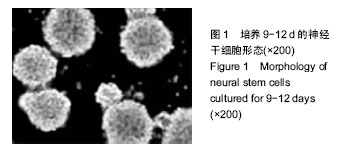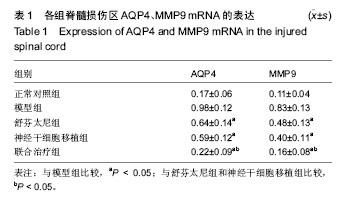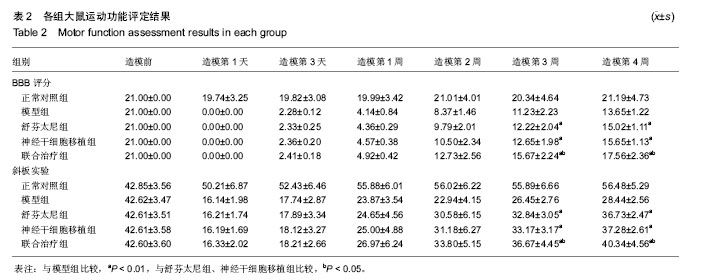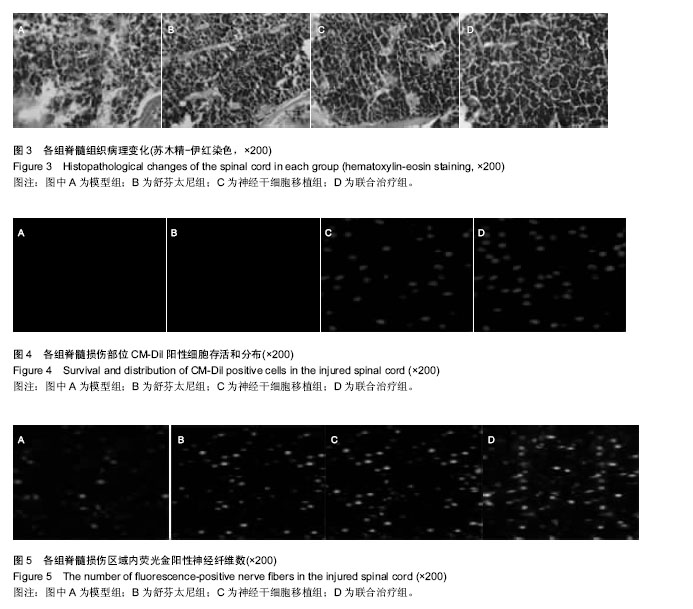| [1] 战传军.脊髓损伤中上调蛋白泛素化激活酶E1鉴定与功能分析[D].长春:吉林大学,2014.[2] 张文龙,祁全.组织工程支架在脊髓损伤治疗的研究进展[J].中国矫形外科杂志,2014,22(4):320-323.[3] Yoshida Y, Yamanaka S. Recent stem cell advances: induced pluripotent stem cells for disease modeling and stem cell-based regeneration. Circulation. 2010;122(1):80-87.[4] 蔡维望.神经干细胞来源及应用的研究进展[J].中国生物制品学杂志,2014,27(3):436-440.[5] 王珏,邓宇斌,万勇.Notch信号通路对神经干细胞增殖分化的作用[J].中国细胞生物学学报,2014,36(5):708-712.[6] 梁锐超,方芳.内源性神经干细胞在中枢神经系统创伤修复中的研究进展[J].华西医学,2014,29(1):150-154.[7] Dooley D, Vidal P, Hendrix S. Immunopharmacological intervention for successful neural stem cell therapy: New perspectives in CNS neurogenesis and repair. Pharmacol Ther. 2014;141(1):21-31.[8] Tuszynski MH, Wang Y, Graham L, et al. Neural stem cell dissemination after grafting to CNS injury sites. Cell. 2014; 156(3):388-389.[9] Ormond DR, Shannon C, Oppenheim J, et al. Stem cell therapy and curcumin synergistically enhance recovery from spinal cord injury. PLoS One. 2014;9(2):e88916.[10] Shrestha B, Coykendall K, Li Y, et al. Moon A,Repair of injured spinal cord using biomaterial scaffolds and stem cells. Stem Cell Res Ther. 2014;5(4):91.[11] Abdulhaleem FA, Song X, Kawano R, et al. Akhirin regulates the proliferation and differentiation of neural stem cells in intact and injured mouse spinal cord. Dev Neurobiol. 2015; 75(5):494-504.[12] Neirinckx V, Cantinieaux D, Coste C, et al. Concise review: Spinal cord injuries: how could adult mesenchymal and neural crest stem cells take up the challenge. Stem Cells. 2014;32(4): 829-843.[13] Lu P, Kadoya K, Tuszynski MH. Axonal growth and connectivity from neural stem cell grafts in models of spinal cord injury. Curr Opin Neurobiol. 2014;27:103-109.[14] Yasuda A, Tsuji O, Shibata S, et al. Significance of remyelination by neural stem/progenitor cells transplanted into the injured spinal cord. Stem Cells. 2011;29(12): 1983-1994.[15] 孙晓飞,金光辉,谢杨,等.神经干细胞移植治疗脊髓损伤的研究进展[J].中国矫形外科杂志,2015,23(18):1680-1682.[16] 唐玲玲,张承华,董发团.不同剂量艾司洛尔复合舒芬太尼对脊柱侧弯矫形术患者唤醒试验期间应激反应的影响[J].昆明医科大学学报,2015,36(12):73-76.[17] 侯清武.舒芬太尼或瑞芬太尼复合麻醉在脊柱侧弯术中唤醒的比较[D]. 石河子:石河子大学,2014.[18] 李丽萌.舒芬太尼后处理对大鼠在体心肌缺血再灌注损伤的保护作用[D].福州:福建医科大学,2010.[19] 张劲,曹定睿.舒芬太尼预处理对大鼠肠缺血再灌注肝损伤的影响及阿片受体介导作用的研究[D].太原:山西医科大学,2012.[20] Wang S, Duan Y, Su D, et al. Delta opioid peptide [D-Ala2, D-Leu5] enkephalin (DADLE) triggers postconditioning against transient forebrain ischemia. Eur J Pharmacol. 2011;658(2-3):140-144.[21] Fujimoto Y, Abematsu M, Falk A, et al. Treatment of a mouse model of spinal cord injury by transplantation of human induced pluripotent stem cell-derived long-term self-renewing neuroepithelial-like stem cells. Stem Cells. 2012;30(6):1163- 1173.[22] Lundberg J, Södersten E, Sundström E, et al. Targeted intra-arterial transplantation of stem cells to the injured CNS is more effective than intravenous administration: engraftment is dependent on cell type and adhesion molecule expression. Cell Transplant. 2012;21(1):333-343.[23] Wu MF,Zhang SQ,Gu R,et al.Transplantation of erythropoietin gene-modified neural stem cells improves the repair of injured spinal cord. Neural Regen Res. 2015;10(9): 1483-1490.[24] 王喜良,赵岩,左媛,等.神经干细胞移植联合腹腔注射促红细胞生成素对横断性脊髓损伤大鼠神经轴突的修复作用[J].吉林大学学报:医学版,2015,41(1):99-104.[25] Wang G, Ao Q, Gong K, et al. Synergistic effect of neural stem cells and olfactory ensheathing cells on repair of adult rat spinal cord injury. Cell Transplant. 2010;19(10):1325- 1337.[26] 程岑,顾尔伟,鲁显福,等.舒芬太尼后处理对大鼠局灶性脑缺血再灌注损伤的保护作用[J].安徽医科大学学报,2014,49(7):883- 886.[27] 李立新,吴幼章,胡卫星,等.甲基强的松龙和神经干细胞移植联合治疗大鼠脊髓损伤[J].中华神经外科疾病研究杂志,2002, 1(3): 258-261.[28] 武俏丽,梁建伟,阎晓玲,等.神经干细胞移植联合神经节苷脂治疗大鼠脊髓损伤[J].中华创伤杂志,2011,27(9):834-838.[29] Chen G, Hu YR, Wan H, et al. Functional recovery following traumatic spinal cord injury mediated by a unique polymer scaffold seeded with neural stem cells and Schwann cells. Chin Med J (Engl). 2010;123(17):2424-2431.[30] Lu P, Kadoya K, Tuszynski MH. Axonal growth and connectivity from neural stem cell grafts in models of spinal cord injury. Curr Opin Neurobiol. 2014;27:103-109.[31] Yasuda A, Tsuji O, Shibata S, et al. Significance of remyelination by neural stem/progenitor cells transplanted into the injured spinal cord. Stem Cells. 2011;29(12): 1983-1994.[32] Cusimano M, Biziato D, Brambilla E, et al. Transplanted neural stem/precursor cells instruct phagocytes and reduce secondary tissue damage in the injured spinal cord. Brain. 2012;135(Pt 2):447-460.[33] Qi ZP,Wang GX,Xia P,et al.Effects of microtubule-associated protein tau expression on neural stem cell migration after spinal cord injury.Neural Regen Res.2016;11(2): 332-337.[34] Lee JY, Choi HY, Na WH, et al. 17â-estradiol inhibits MMP-9 and SUR1/TrpM4 expression and activation and thereby attenuates BSCB disruption/hemorrhage after spinal cord injury in male rats. Endocrinology. 2015;156(5):1838-1850.[35] Skuja S, Groma V, Ravina K, et al. Protective reactivity and alteration of the brain tissue in alcoholics evidenced by SOD1, MMP9 immunohistochemistry, and electron microscopy. Ultrastruct Pathol. 2013;37(5):346-355.[36] 董宝铁,李泓,费良健,等.CB1大麻素受体激动剂抑制基质金属蛋白酶参与脊髓损伤后血-脊髓屏障通透性调节[J].临床军医杂志, 2015,43(9):906-908. |
.jpg)





.jpg)